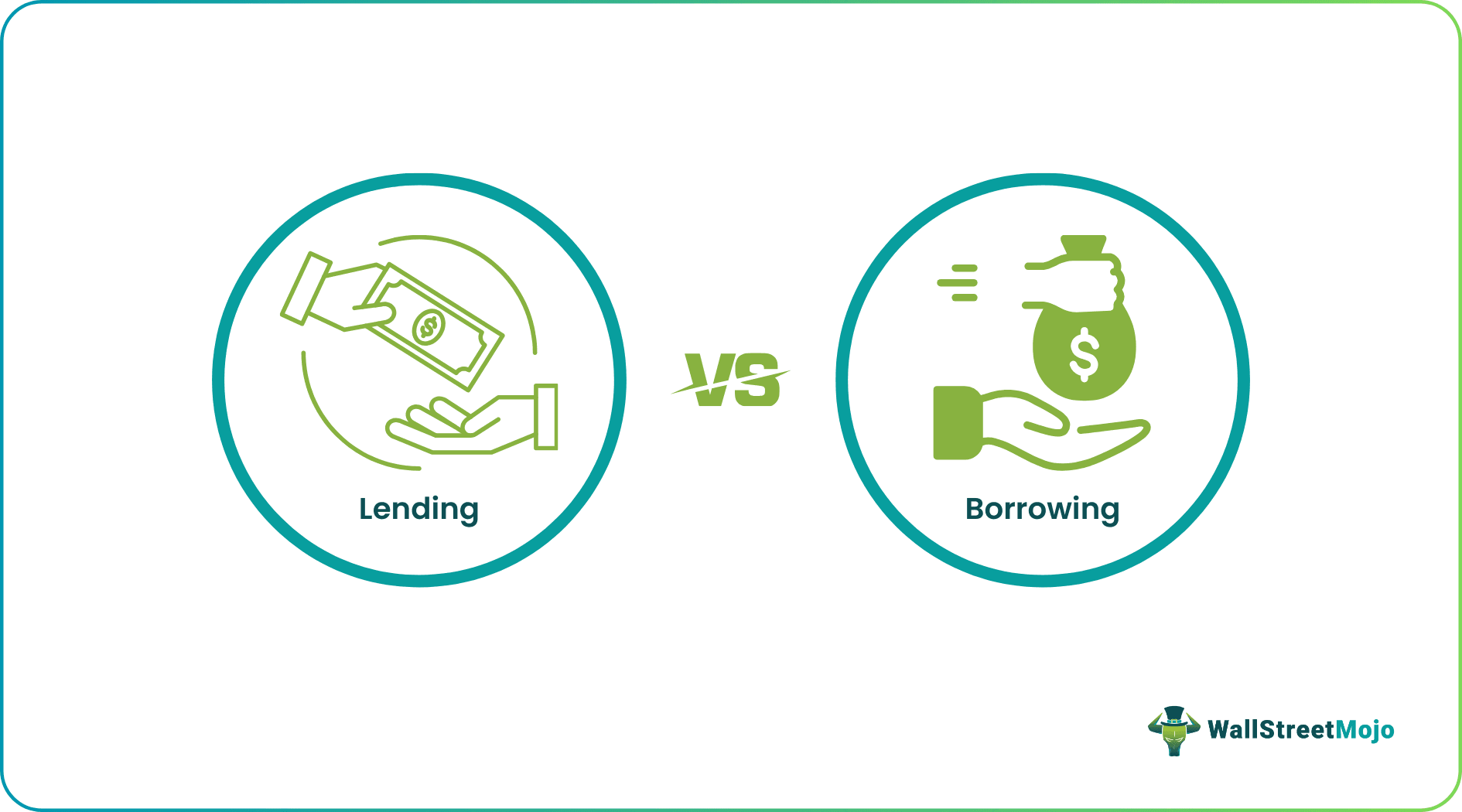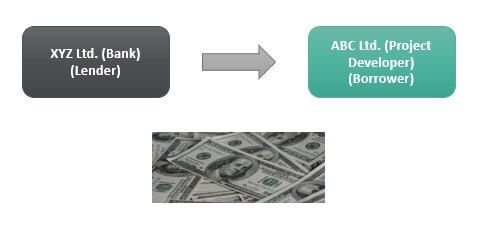Table Of Contents
Difference Between Lending and Borrowing
Lending refers to when an entity or person gives away its resources to another entity or person per predefined mutual terms. In contrast, borrowing refers to receiving resources by an entity or person from another entity or person with predefined mutually agreed-upon terms.

Example of Lending and Borrowing
A company, ABC Ltd., is developing infrastructure projects. They need funding to the extent of $100 million to complete their upcoming project for developing a road. Therefore, they approached a bank (XYZ Ltd.) to avail funding to the extent of $100 million for the said project and received a grant from the bank on mutually agreed commercial terms.

In the above example, XYZ Ltd. is lending money to ABC Ltd. This process is known as lending, and XYZ Ltd., in this example, is the lender. Similarly, ABC Ltd., in this case, receives funds from XYZ Ltd. to complete the road project. This process is known as borrowing, and ABC Ltd. is known as a borrower.
Lending vs Borrowing Infographics

Key Differences
The key differences are as follows: -
- A process is known as lending when an entity or person gives away its resources to another entity or person per predefined mutual terms. In contrast, the process of receiving resources by an entity or person from another entity or person with predefined mutually agreed upon terms is known as borrowing.
- Both are part of single transactions with different purposes of parties involved.
- Lending is the process of giving money to an entity/person. However, borrowing is receiving money from an entity/person.
- In borrowing, resources are borrowed by a resource deficit entity from a resource surplus entity. However, in lending, resources are lent to a resource deficit entity by a resource surplus entity.
- The lending entity in the transaction receives interest against the moneylender to the borrower. However, the borrowing entity pays interest to lend a set-up against the borrowed money.
- Both are very critical to the economy of any country and operate with different purposes/business models. Lending the entity's purpose is to earn interest on the money lent to borrowing entities. However, the borrowing entities borrow money for their business expansion, or individuals borrow money to meet their goals such as house construction, children's education, etc.
- Both are executed on commercial or non-commercial terms based on the nature of the transaction. However, lending entities and borrowers who dictate the terms of transactions have a relatively lesser say.
- Regulatory compliances for lending entities are much stricter than the borrowing entities.
Comparative Table
| Basis | Lending | Borrowing |
|---|---|---|
| Definition | Lending is giving money by a resource surplus entity/person to a resource deficit person/entity on commercial or non-commercial terms based on mutual understanding. | Borrowing is taking/receiving money by a resource deficit entity/person from a resource surplus person/entity on commercial or non-commercial terms based on mutual understanding. |
| Purpose | Generally, lending earns interest on the money lent to the borrowing entity. For example, the business model of most lending entities, such as banks and financial institutions, is to make interest by lending money to needy entities. | The purpose of the borrowing entities is to deploy the borrowed funds or resources in the company's day-to-day operation, set up a new project, expand the business, etc. |
| Money/Resource Flow in Transaction | Flow from a resource surplus entity to a resource deficit entity. | Flow from a resource surplus entity to a resource deficit entity. |
| Parties Involved | Both are part of the transaction. | Both are part of the transaction. |
| Nature of Business | A lending entity’s primary nature is generally lending money to entities looking to expand or set up businesses. Banks and financial institutions are prominent examples of lending entities in the real world. | A borrowing entity may be involved in various companies that need resources/money to operate or set up new businesses. Large business houses working in real estate, steel, power, energy, roads, and other major examples of borrowing entities. |
| Risk Exposure | Lending entities in these transactions are generally at higher risk because of the risk associated with borrowing entities defaulting on returning the money to the lending entity. | Borrowing entities are relatively at lower risk than lending entities as they receive money from the lending entity for their businesses. |
| Terms of Transaction | The transaction terms are decided on a mutually agreed basis but are mostly dictated by the lending entities. | The terms of the transaction are determined based on a mutually agreed basis. For example, borrowing terms are dictated by borrowing entities in the case of a borrower with strong financials. |
| Interest Payment | Lending entities receive interest payments against the borrower entity's money based on mutually agreed terms. | Borrowing entities pay interest against the money borrowed based on mutually agreed terms. |
| Example | A bank named ABC Ltd., lending $100 million to XYZ Ltd. to set up a road project on commercial terms is an example of the lending process. ABC Ltd., in this process, is the lender. | In the same example, XYZ Ltd. borrowed $100 million to use that money to set up the road project. This process is known as borrowing, and the entity XYZ Ltd. is known as a borrower. |
Conclusion
Lending and borrowing are parts of a single transaction wherein one party is a lender, and the other is the borrower. Both are required for a lending or borrowing transaction to be completed. They involve resource transfer from resource surplus entity to resource deficit entity on mutually agreed terms. A lending entity generally gets paid interest on the borrowed entity's money.
Both are critical for any economy to grow as this helps in the effective utilization and transfer of resources systematically within the economy.
